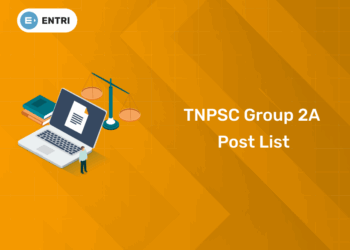Table of Contents
Introduction
Artificial Intelligence (AI) has become the buzzword of this decade. From chatbots and self-driving cars to predictive analytics in stock trading, AI has transformed how industries operate. But as AI companies see skyrocketing valuations, one question is beginning to echo across trading floors and investor circles alike , are we in an AI bubble?
If you’ve been following the markets lately, you’ve seen AI-driven stocks dominating the headlines. Every tech company seems to be adding “AI” to its product line, and venture capital is flowing into AI startups at record speed. The situation feels familiar, reminiscent of the dot-com bubble of the early 2000s or the crypto surge of 2021.
In this blog, we’ll explore whether the current AI euphoria represents genuine technological transformation or speculative excess. We’ll also look at what financial analysts, economists, and market experts have to say , and how investors can navigate this volatile yet opportunity-filled phase.
The AI Revolution: From Innovation to Investor Obsession
Artificial Intelligence isn’t new. But its commercial scalability has accelerated dramatically since 2022, thanks to breakthroughs in machine learning models, computing power, and accessibility via platforms like ChatGPT, Google Gemini, and Claude.
How AI Became the “Next Big Thing”
- Corporate adoption: Major firms like Microsoft, Google, and NVIDIA have integrated AI into products and infrastructure, sparking investor confidence.
- AI infrastructure boom: Chipmakers such as NVIDIA and AMD saw exponential revenue growth due to demand for AI GPUs.
- Venture capital momentum: In 2024 alone, global VC funding in AI startups exceeded $50 billion, surpassing even fintech.
- Public fascination: AI tools are reaching mainstream users, unlike earlier tech waves that stayed behind closed corporate doors.
As a result, AI-related stocks have surged, making the tech sector the main driver of global equity performance over the past two years.
Signs That Suggest an AI Bubble Might Be Forming
1: What is a stock?
While AI’s potential is undeniable, several analysts have drawn parallels between the AI boom and historical speculative bubbles.
a) Exaggerated Valuations
AI companies, especially startups, are being valued far beyond their revenue potential. Some AI tool providers with negligible profits are trading at price-to-sales (P/S) ratios exceeding 40–50x, which is unsustainable in the long term.
b) “AI-Washing” Phenomenon
Just as blockchain once became a marketing buzzword, companies are now rebranding themselves as “AI-driven” to attract investor attention , even if their actual AI integration is minimal.
c) Overconcentration of Capital
A large share of AI investments is funneled into a few major players , NVIDIA, Microsoft, and Alphabet. This creates market imbalance.
According to Bloomberg Intelligence (2025), NVIDIA alone accounted for over 30% of the S&P 500’s total return in 2024.
d) Retail Speculation
Many retail investors are pouring into AI-themed ETFs and penny stocks without understanding business fundamentals, a classic warning sign of speculative mania.
Learn Stock Marketing with a Share Trading Expert! Explore Here!
Expert Opinions: What Analysts Are Saying
Let’s look at what major financial voices are saying about the potential “AI bubble.”
Goldman Sachs (2025):
AI remains a “high-growth, high-volatility” segment. The firm estimates AI could add 7% to global GDP by 2035, but warns of short-term corrections as valuations outpace earnings.
Morgan Stanley:
Analysts say the market is “pricing in perfection.” If AI adoption slows or corporate spending tightens, high-growth AI stocks could see a 20–30% revaluation.
ARK Invest (Cathie Wood):
Cathie Wood believes AI is not a bubble but a long-term paradigm shift, comparing it to the internet revolution. She emphasises that true AI productivity gains may take another 5–7 years to reflect in corporate profits.
JP Morgan:
JP Morgan analysts see AI infrastructure (like chips and cloud services) as sustainable investments but caution against “AI application startups” that lack cash flow stability.
Indian Market Analysts:
Indian experts, including those at ICICI Direct and Motilal Oswal, suggest Indian investors should be cautious with imported euphoria. AI is a megatrend, but domestic tech stocks may not benefit at the same scale as U.S. peers in the short term.
Lessons from Past Bubbles
To understand today’s AI hype, it’s worth revisiting how similar market manias unfolded in history.
| Period | Event | Trigger | Outcome |
| 1999–2000 | Dot-Com Bubble | Internet adoption hype | NASDAQ lost 78% of its value |
| 2007–2008 | Subprime Crisis | Mortgage-backed speculation | Global financial meltdown |
| 2017–2018 | Bitcoin Boom | Retail-driven crypto craze | 80% correction within a year |
| 2020–2021 | Meme Stock Mania | Social media speculation | Temporary surges, heavy losses |
While every bubble has unique causes, they share common traits: rapid growth, unrealistic expectations, retail over-participation, and a painful correction.
AI currently exhibits at least two of those signs , rapid capital inflow and inflated valuations , though it’s backed by stronger fundamentals than previous manias.
Why This Might Not Be a Bubble
Despite the growing skepticism, not all experts agree that we’re in an AI bubble.
Here’s why some believe this time is different:
- Real Revenue Growth: Unlike the dot-com era, many AI companies (like NVIDIA, Microsoft, and Google) are already generating billions in revenue.
- Enterprise Adoption: Corporations are actively integrating AI into operations, from finance and logistics to HR and marketing.
- AI Regulation and Transparency: Governments are creating frameworks to ensure ethical and sustainable AI growth.
- Long-Term Productivity Gains: Analysts expect AI to increase corporate productivity by 1.5–2% annually , a structural improvement, not hype.
Essentially, while AI valuations may be stretched, the underlying technology is transformative and here to stay.
Stock Market Training Reviewed & Monitored by SEBI Registered RA
Trusted, concepts to help you grow with confidence. Enroll now and learn to start investing the right way.
Know moreThe India Angle: How Indian Investors Should View the AI Hype
India is not far behind in embracing AI. From government initiatives in digital governance to startups in fintech and healthtech, the AI ecosystem here is expanding fast.
However, Indian retail investors often mirror U.S. market sentiment. So, when global AI stocks soar, related Indian tech stocks (like TCS, Infosys, or KPIT Tech) also gain momentum.
Key points for Indian investors:
- The AI opportunity in India lies in implementation and data analytics , not just in building models.
- AI-focused Indian firms may take time to show meaningful revenue impact.
- Diversification is essential , do not allocate all capital to AI or tech ETFs.
- Follow long-term trends, not short-term spikes.
How to Identify Sustainable AI Stocks
Not every company using “AI” in its name is an AI leader. Here’s what to look for:
- Revenue from AI products/services , Is AI a core business driver or a buzzword?
- R&D spending ratio , True innovators invest heavily in research.
- Partnerships & patents , Look for collaborations with global tech giants.
- Profitability timeline , Does the company have a realistic path to profit?
- Valuation sanity , Compare P/E or P/S ratios with industry averages.
How Entri’s Stock Market Course Helps You Analyse Such Trends
If market trends like “AI bubble” or “tech rally” confuse you, structured financial education can make all the difference.
Entri’s Stock Market Course teaches learners how to:
- Interpret macroeconomic trends and identify speculative bubbles.
- Analyse financial statements of companies.
- Apply technical analysis to time entries and exits.
- Understand how AI and other megatrends affect stock valuations.
- Make data-driven investment decisions , not emotional ones.
Whether you’re a beginner or professional investor, Entri helps you trade smarter, reduce risk, and build a well-diversified portfolio.
👉 Explore now: Entri Stock Market Course
Key Takeaways
- The AI boom is real, but some valuations show bubble-like characteristics.
- Analysts expect short-term volatility, though long-term AI adoption remains strong.
- Investors should distinguish between AI infrastructure companies (sustainable) and AI concept stocks (speculative).
- Learn to interpret market sentiment, valuations, and fundamentals through structured learning like Entri’s Stock Market Course.
- Avoid herd mentality, smart investing is about analysis, not hype.
Conclusion
So, are we in an AI bubble?
The answer isn’t simple; we’re in a phase of exuberant optimism with pockets of excess.
While AI technology is genuinely transformative, investor expectations have run ahead of financial reality in certain segments.
As history shows, bubbles form when innovation meets greed, and eventually, markets find balance.
For investors, this isn’t a time to panic but to stay informed, diversify, and focus on fundamentals.
The future belongs to those who understand both innovation and valuation, and that begins with education.
Stock Market Training Reviewed & Monitored by SEBI Registered RA
Trusted, concepts to help you grow with confidence. Enroll now and learn to start investing the right way.
Know moreFrequently Asked Questions
What is an AI bubble?
An AI bubble refers to a market scenario where the valuations of AI companies are inflated beyond their real earning potential due to hype and investor speculation.
Are AI stocks overvalued?
Many AI-related stocks, especially startups, are currently trading at stretched valuations, though established players like NVIDIA and Microsoft have solid fundamentals.
What triggered the AI boom?
Rapid advancements in machine learning, growing corporate adoption, and global hype around generative AI tools triggered the AI stock boom.
Is the AI bubble similar to the dot-com bubble?
There are similarities in investor excitement, but AI firms today have stronger revenue streams compared to early internet companies.
Should investors avoid AI stocks?
Not necessarily. Invest selectively, focus on companies with proven products, sustainable cash flow, and realistic growth.
What happens if the AI bubble bursts?
Overvalued stocks may correct sharply, but long-term players with real AI infrastructure and innovation will survive and thrive.
Which sectors benefit from AI long term?
Semiconductors, cloud computing, automation, data analytics, and cybersecurity are among the sectors that will continue to benefit.
Is AI good for the stock market overall?
Yes, AI improves analytics, trading algorithms, and company productivity, though it introduces short-term volatility.
How can I learn to invest wisely during AI-led market trends?
Join Entri’s Stock Market Course, it helps you understand market cycles, spot bubbles, and invest with confidence.














